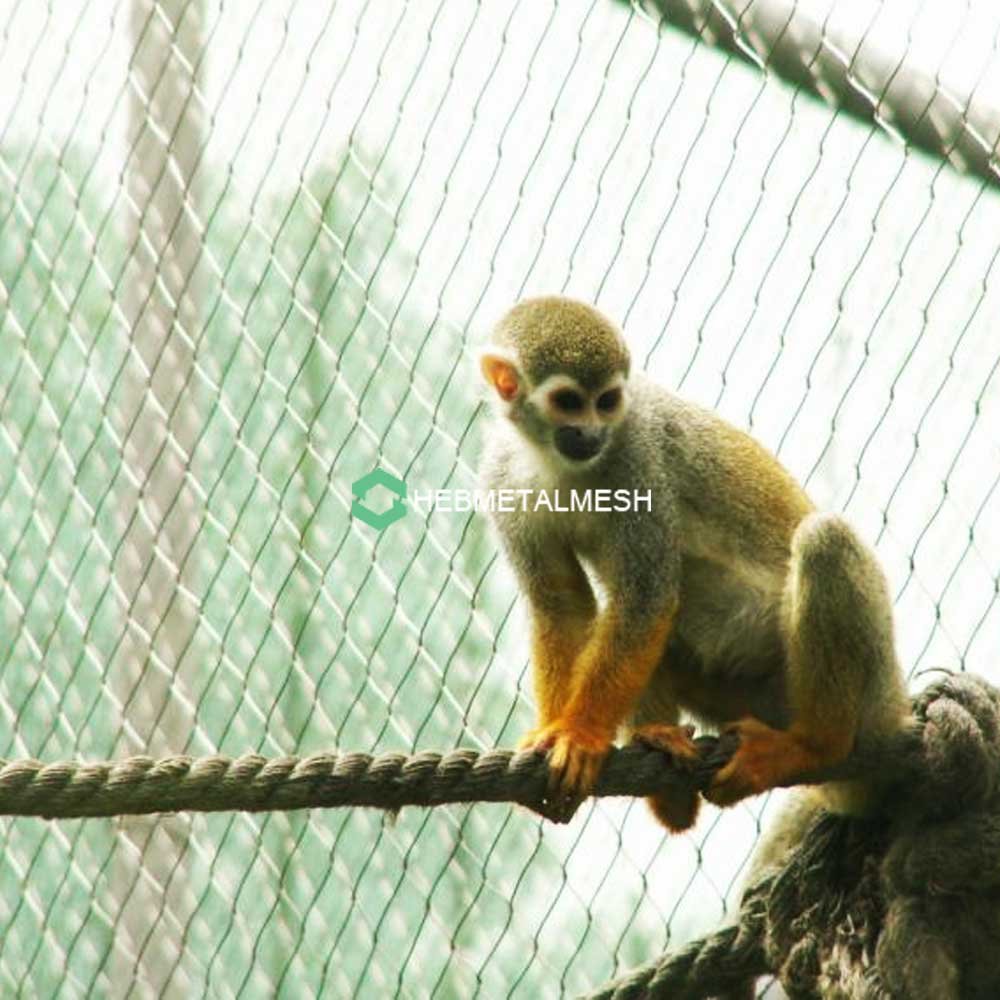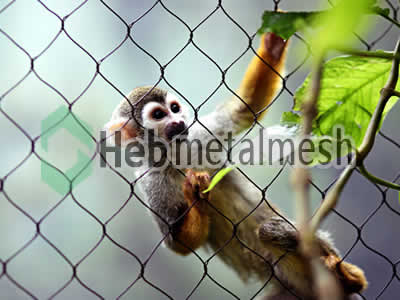Introduction
The Crucial Role of Monkey Cages in Primate Welfare
Okay, let’s talk about monkey cages. They might not seem like the most glamorous part of zookeeping, but they’re actually super important for a monkey’s well-being. Think of it this way: your home is your sanctuary, right? It’s where you relax, recharge, and feel safe. A monkey cage is their home away from the wild. So, getting it right is crucial for their happiness and health.
We’re going to dive into everything you need to know about designing, building, and maintaining monkey cages. From picking the right materials to creating a stimulating environment, we’ve got you covered. Let’s get started!
✌Monkey Netting Give Series Monkey Enclosure Mesh For Zoos
Monkey Cage Design
Designing Monkey Cages for Optimal Primate Welfare
Designing a monkey cage isn’t just about throwing together some bars and calling it a day. It’s about creating a space that meets the specific needs of your primate residents. We’re talking about everything from cage size and spacing to ventilation and enrichment opportunities.
First off, let’s talk about size. You want to make sure your monkeys have enough room to move around comfortably. Cages that are too small can lead to stress, boredom, and even health problems. Remember, we’re not just housing animals; we’re creating habitats.
Spacing is another crucial factor. You’ll want to consider the social dynamics of your monkey group. Some species are more solitary, while others thrive in larger groups. The spacing between bars is also important. You want to make sure they’re wide enough to prevent injuries but narrow enough to keep your monkeys secure.
Ventilation is key to a healthy environment. Fresh air helps to prevent the buildup of harmful bacteria and odors. It also helps to regulate temperature and humidity. A well-ventilated cage will contribute to the overall well-being of your monkeys.
So, there you have it – the basics of monkey cage design. Let’s dive deeper into some specific considerations in the next section.

Cage Construction and Materials
Building Durable and Safe Monkey Cages
Now that we’ve laid the groundwork for design, let’s talk about building your monkey cage. This is where things get hands-on! Choosing the right materials is crucial for both the safety of your monkeys and the longevity of the enclosure.
Safety should always be your top priority. The materials you use need to be strong enough to withstand the antics of even the most energetic primates. You also want to make sure there are no sharp edges or corners that could cause injuries.
When it comes to flooring, consider using materials that are easy to clean and disinfect. Concrete is a popular choice, but rubber or other non-slip options can also work well. Walls should be smooth and easy to clean. Avoid materials that can be easily damaged or chewed.
Stainless Steel Rope Mesh: The Ideal Cage Material
✌Zoo Mesh Series With Hand woven stainless steel netting
Let’s talk about a game-changer for monkey cages: stainless steel rope mesh. This stuff is incredible! It’s strong, durable, and virtually indestructible. Monkeys love to climb, and rope mesh gives them plenty of opportunities to do so without putting themselves at risk.
Plus, it’s incredibly easy to clean and maintain. No more scrubbing away at stubborn dirt and grime. Stainless steel is also resistant to rust and corrosion, so your cage will look great for years to come.
Additional Cage Components: Flooring, Walls, and Perches
We’ve touched on flooring and walls, but let’s not forget about perches. These are essential for monkeys to climb, play, and rest. Different monkey species have different preferences, so it’s important to provide a variety of perch options. Think about varying the thickness and texture to keep things interesting.
Remember, a well-constructed cage is the foundation for a happy and healthy monkey habitat. So, choose your materials wisely and build with your primates in mind.
Enrichment and Stimulation
Enhancing Monkey Well-being Through Enrichment
Okay, we’ve talked about building a sturdy and safe home for our monkey friends. Now, let’s make it fun! Enrichment is all about creating a stimulating environment that keeps your monkeys mentally and physically engaged. It’s like adding the finishing touches to their home sweet home.
Enrichment isn’t just about throwing in some toys and calling it a day. It’s about understanding your monkeys’ natural behaviors and providing opportunities for them to express those behaviors. Think about what monkeys do in the wild – climbing, exploring, foraging, and socializing. Your goal is to recreate those experiences as closely as possible within the confines of their cage.
By providing a variety of enrichment activities, you can help prevent boredom, reduce stress, and improve your monkeys’ overall well-being. It’s like giving them a mental workout!
Creative Enrichment Ideas for Monkey Cages
So, what kind of enrichment can you provide? The possibilities are endless! Here are a few ideas to get you started:
- Manipulative enrichment: This involves providing objects that monkeys can interact with, like puzzle feeders, toys, and ropes.
- Sensory enrichment: Appeal to your monkeys’ senses with different textures, smells, and sounds. Think about incorporating items like aromatic plants, music, or even different types of lighting.
- Social enrichment: Encourage social interaction among your monkeys by providing opportunities for grooming, play, and shared activities.
Remember, variety is key! Rotate enrichment items regularly to keep your monkeys engaged and challenged. And don’t be afraid to experiment and see what your monkeys enjoy.
The Importance of Social Interaction for Monkeys
As social creatures, monkeys thrive on interaction with their peers. Providing opportunities for social play and grooming is crucial for their mental and emotional well-being. Social enrichment can help to reduce stress, strengthen bonds, and promote positive behaviors.
By creating a stimulating and enriching environment, you’re not just providing a place for your monkeys to live – you’re creating a space where they can thrive.
Let’s move on to the legal side of things.
Legal Regulations and Safety
Adhering to Monkey Cage Regulations for Optimal Welfare
Building and maintaining monkey cages isn’t just about creating a comfortable space for your primates. It’s also about complying with a maze of regulations and laws. These rules are in place to protect both the animals and the people who care for them.
Every country and state has its own set of animal welfare standards. It’s essential to familiarize yourself with the specific regulations that apply to your facility. These laws often cover everything from cage size and construction to enrichment and veterinary care.
Don’t be afraid to reach out to your local animal welfare authorities for guidance. They can provide valuable information and resources to help you ensure compliance.
Safety First: Preventing Accidents in Monkey Cages
Safety should always be a top priority when working with animals. Monkey cages need to be designed and constructed with safety in mind. This includes features like secure locks, non-slip flooring, and emergency escape procedures.
Regular inspections are crucial for identifying potential hazards. Look for signs of wear and tear, broken equipment, or anything that could pose a risk to your monkeys or staff.
It’s also important to provide your staff with proper training on monkey behavior and safety protocols. A well-trained team is your best defense against accidents.
By understanding and adhering to legal requirements and safety protocols, you can create a safe and secure environment for your monkeys.
Let’s wrap things up with a quick recap.
✌Netting for animal enclosure and zoo fencing
Frequently Asked Questions About Monkey Cages
Stainless steel rope mesh is an excellent choice for monkey cages due to its durability, safety, and ease of cleaning. However, the best material will depend on the specific needs of your monkey species and your budget.
Monkey cages should be cleaned regularly to maintain hygiene and prevent the spread of disease. The frequency of cleaning will depend on the number of monkeys, their age, and their hygiene habits.
There are many different types of enrichment you can provide for your monkeys, including puzzle feeders, sensory items, and social opportunities. It’s important to offer a variety of enrichment options to keep your monkeys engaged and stimulated.
The size of your monkey cage should be based on the number and size of your monkeys. Your local animal welfare regulations may also provide specific guidelines for cage size.
If your monkey is showing signs of stress, it’s important to identify the cause and make changes to their environment or routine. Providing additional enrichment, increasing social interaction, or reducing environmental stressors can help to alleviate stress.
Conclusion
So, there you have it! Creating the perfect monkey cage is a combination of art and science. It’s about providing a safe, stimulating, and enriching environment that meets the unique needs of your primate residents.
By following these guidelines, you can create a space where your monkeys can thrive and flourish. Remember, every monkey is an individual, so don’t be afraid to experiment and find what works best for your group. Happy monkey, happy keeper!



